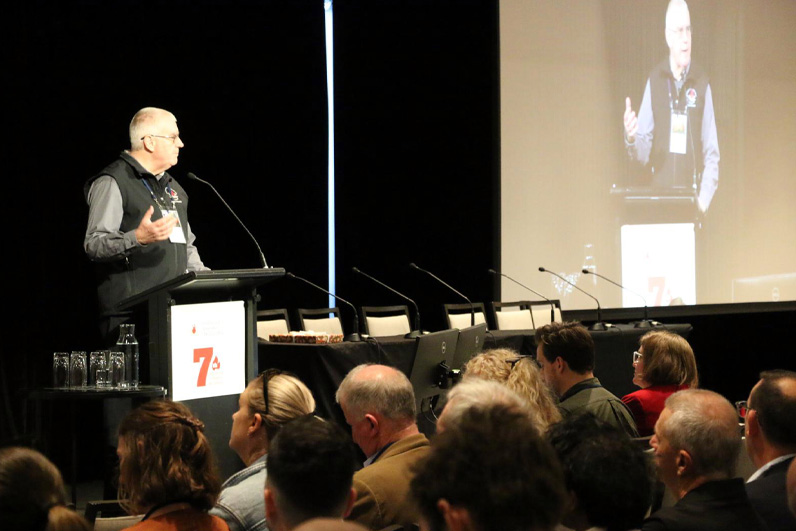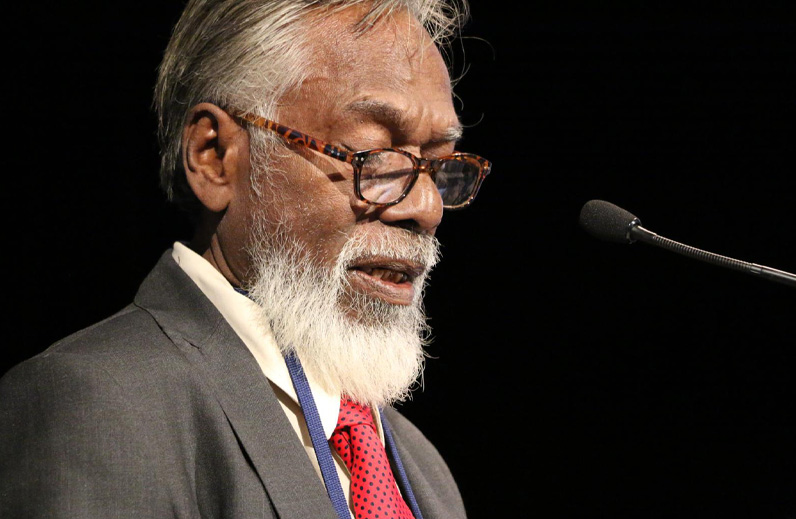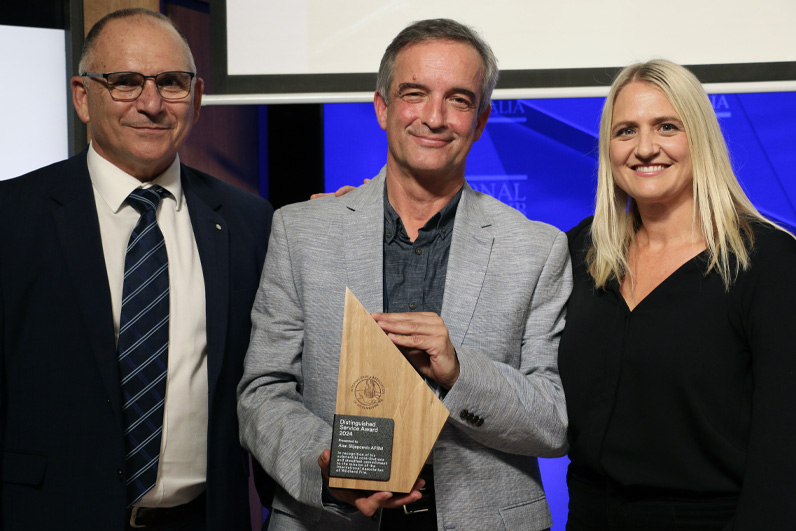The global fire science community gathered to discuss the latest research, practices and future themes at the 7th International Fire Behaviour and Fuels Conference held concurrently in Canberra Australia, Boise Idaho and Tralee Ireland in April 2024.
There were 11 keynote addresses and 363 presentations that took place concurrently around the theme ‘Fuel, Fire and Smoke: Evolving to Meet Our Climate Challenge’. Delegates were treated to more than 100 research presentations from colleagues, peers, research students and industry leaders. Hosted by the International Association of Wildland Fire (IAWF), themes tackled risk modelling, fuel management, emerging tech and approaches, cultural perspectives, human dimensions and weather and climate.
Opening keynote speaker in Canberra and Boise and speaking from her home in Indiana, US Fire Administrator Dr Lori Moore-Merrell, provided global context to the ongoing and increasing challenges facing fire response and management agencies. She drew on recommendations from the Wildland Fire Mitigation and Management Commission’s report to the US Congress to improve federal policies related to the mitigation, suppression and management of wildland fires and the rehabilitation of land devastated by wildland fires.
Dr Moore-Merrell emphasised the fire science community’s role in meeting climate challenges through developing fire-adaptive communities and preparedness. She stressed the need for ‘intelligence, not just information’ through leveraging information across all fire and emergency management agencies.

Dr Lori Moore-Merrell, US Fire Administrator was the keynote speaker at the conference.
Image: NHRA
Dr Lachlan McCaw drew on his extensive experience as a fire scientist in Western Australia and elsewhere to celebrate fire management achievements over the past 40 years, and where to from here. Professor Nerilie Abram from the Australian National University spoke about the future of fires and fire ecology and highlighted the effects of climate variability on dangerous fire weather in southeast Australia.

IAWF Vice President, Trevor Howard.
Image: NHRA
Dr Dean Yibarbuk, Chairman Warddeken Land Management Ltd, presented on the disconnection of First Nations peoples in Western Arnhem Land from their cultural fire practices and their subsequent re-establishment in the last 20 years. Streamed to delegates in Boise, Dr Yibarbuk shared his and the Warddeken Rangers mission to ‘share the gift of understanding of fire without fear’ with fire managers around the world.

Dr Dean Yibarbuk, Chairman Warddeken Land Management Ltd.
Image: NHRA
The panel discussion was hosted by anthropologist and disaster psychologist, Dr Steve Sutton. The panel comprised Dr Yibarbuk, Aidan Galpin (SA Country Fire Service), Dean Freeman (Riverina Local Land Services), Dr Rowena Morris (Natural Hazards Research Australia), Kirsty Babington (ACT Parks and Conservation Service) and former IAWF President, Dr Mike DeGrosky, visiting from the US. The panel discussion unpacked culture, human nature and fire management. Dr Sutton posed the questions:
Do the varied communities and organisations we are part of understand how these relationships work and how they need to adapt to meet climate change?
Professor of Wildlife Conservation, Professor Sarah Legge from Charles Darwin University highlighted the value of small patch burning on species biodiversity through the Pirra Jungku project alongside the Karajarri Rangers in the Great Sandy Desert in the Western Kimberley region of Western Australia.
The concept of ‘right fire’ carried out in the correct cultural way by the correct people and the way these people interact with the fire is key. This ensures diversity of the short, mid and mature growth vegetation that is crucial to biodiversity in the Great Sandy Desert as well as reducing the effects of feral animals.
The final keynote speaker, Dr Dan Pronk, brought a change of pace by looking at building resilience for people working in high-stress, high-consequence roles. A former Australian Army SAS doctor with more than 100 active missions in Afghanistan, Dr Pronk developed the Resilience Shield approach to building resilience in response to the high levels of stress he experienced once discharged from active service. His unique personal insight into the sustained and ongoing stress and trauma associated with first responder roles, as well as the overwhelming evidence that members of the emergency management sector experience higher rates of mental and physical illness, were a timely reminder that everyone, from frontline staff to planning and researchers, can be at risk of high stress and burnout.
The IAWF acknowledged Alen Slijepcevic AFSM, Country Fire Authority, with the Distinguished Service Award, recognising his commitment and outstanding contribution to furthering the goals of the Association. Alen is well known in the Australian and international fire science and management sectors.
Pre-conference workshops included ‘Exploring the state of the science if ember transport and impacts’, presented by the University of New South Wales and ‘The future of fire-weather intelligence’, presented by the Bureau of Meteorology. Field trips were to the CSIRO National Bushfire Behaviour Research Laboratory in Canberra.



